- The inductor is a passive element that holds energy in its magnetic field.
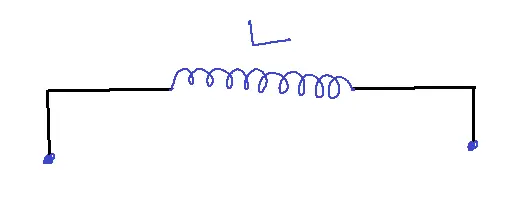
- Inductances of the Inductor depend on physical dimensions.
L=N2µA/l
N – Number of terms
µ – Permeability of core. Core means air, iron, and steel.
A – Area of cross section with core.
l– Length of the wire.
- When current flows through an inductor, the voltage across it varies in direct proportion to the rate of change of that current.
V α (di/dt)
V=L (di/dt)
- The units are Henry.
- The voltage across the inductor is zero, if the current is not changing with time.
- It acts as a short circuit for direct current(D.C)
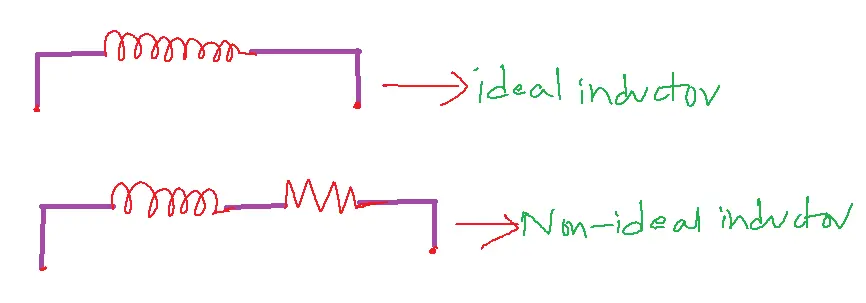
Table of Contents
Important properties of Inductor:
1. The voltage across the Inductor is zero then the current is constant. [ It acts as a short circuit to direct current(DC)]
2. The current through it cannot change instantly.
3. The ideal inductor does not deviate energy, only stores energy. The energy stored can be retained later.
4. The practical Non-ideal inductor is a simplicant resistance component shown in the figure.

Vαdi/dt
V=L di/dt
di=1/L Vdt
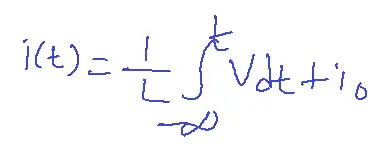
P=Vi
Energy stored in Inductor E=1/2 Li2
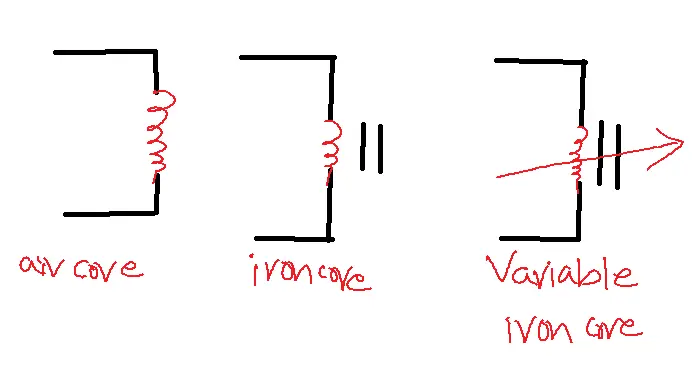
Example: Find the current through the inductor L=5.
Sol:
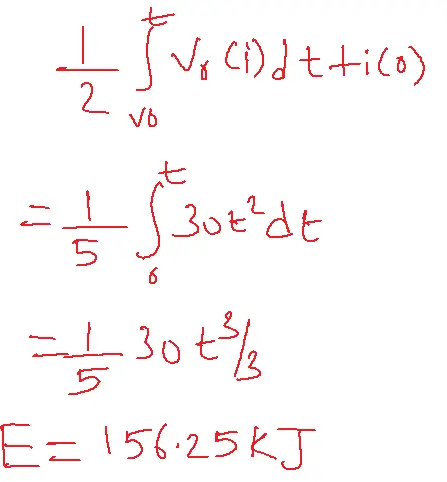
Inductors connected in series:
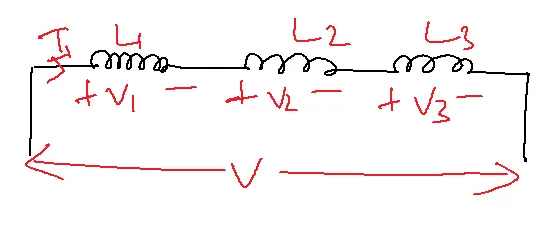
Leqdi/dt=L1di1/dt+L2di2/dt+….
Leq=L1+L2+….+Ln
The equivalent of series inductors is the sum of the individual inductors.
Inductors connected in Parallel:
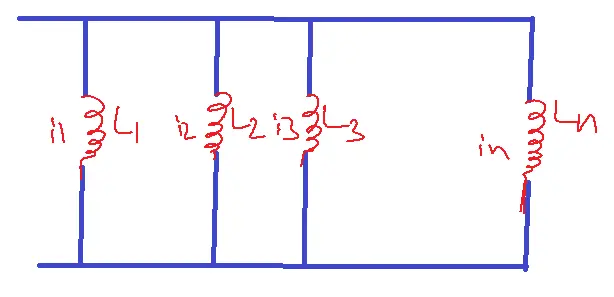
1/Leq=1/L1+1/L2+…+1/Ln
- The equivalent inductance of parallel inductors is the reciprocal of the sum of the reciprocals of individual inductances.
- If n resistors of the same value R are connected in series Leq=nR
- If n resistors of the same value R are connected in parallel Leq=R/n.
Applications:
- Energy Storage: It stores energy in magnetic fields, for smoothing out current fluctuations in power supplies, filters, and DC-DC converters.
- Filtering: Inductors and capacitors create filters that selectively pass or block specific frequencies. This is vital in audio systems, radio receivers, and power electronics.
- Transformers: Transformers, essential for AC voltage conversion, rely on inductors. They efficiently step up or down voltages in power grids and electronic devices.
- Motors and Generators: Inductors are integral to electric motors and generators, where they convert electrical energy into mechanical energy and vice-versa.
- Inductive Sensors: These sensors use inductance changes to detect the presence or proximity of metallic objects, finding applications in security systems, automation, and robotics.
- Tuning Circuits: Variable inductors are used in tuning circuits for radios, TVs, and other communication devices, allowing the selection of specific frequencies.
- Electromagnetic Interference (EMI) Suppression: Inductors help suppress unwanted high-frequency noise and interference in electronic circuits, ensuring reliable operation.
- Chokes: Designed to impede high-frequency AC while facilitating the passage of DC, chokes are inductors commonly employed in power supplies and RF circuitry.
- Magnetic Energy Storage Systems: Large-scale inductors are used in experimental energy storage systems, offering a potential solution for grid stabilization and renewable energy integration.
- Relay Coils: Inductors in relay coils generate magnetic fields that activate switches, enabling control and automation in various electrical systems.
Related FAQs
Q1. What is an inductor, and how does it work?
- A passive electronic component known as an inductor is one that, when an electric current passes through it, stores energy in a magnetic field.
- Its resistance to variations in the flow of electricity is referred to as inductance.
Q2. What are the different types of inductors used in electrical engineering?
- Common types include air-core inductors, iron-core inductors, ferrite-core inductors, and variable inductors. Each type has unique properties and applications.
Q3. How do I calculate the inductance of an inductor?
- Inductance depends on the number of turns, coil area, coil length, and core material.
- Inductance can be calculated using formulas or determined through online calculators by inputting the relevant parameters.
Q4. What are the primary applications of inductors in electrical circuits?
- Inductors are used in various applications, including energy storage, filtering, transformers, motors, generators, sensors, tuning circuits, EMI suppression, and chokes.
Q5. What is the role of inductors in AC and DC circuits?
- In AC circuits, inductors oppose changes in current, causing a phase shift between voltage and current.
- When first connected to a DC circuit, chokes exhibit resistance to current flow, however, they eventually transition into a low-resistance state, akin to a short circuit.
Q6. What are the advantages and disadvantages of using inductors?
- Advantages include energy storage, filtering capabilities, and voltage transformation. Disadvantages include size, weight, potential for electromagnetic interference, and non-linear behavior at high frequencies.
Q7. How do I choose the right inductor for my electrical project?
- Consider factors like inductance value, current rating, frequency range, DC resistance, physical size, and cost. Consult datasheets and online resources for guidance.
Q8. How do inductors interact with capacitors in circuits?
- Resonant circuits are formed by combining inductors and capacitors, and these circuits exhibit specific frequencies at which energy transfer between the components is maximized.
- These circuits are used in filters, oscillators, and other applications.
Q9. What safety precautions should I take when working with inductors?
- Handle inductors carefully as they can store energy and generate high voltages when the current is interrupted. Always disconnect power sources before working on circuits with inductors.
Q10. What are some common troubleshooting tips for inductor-related issues in circuits?
- Check for open or shorted windings, core saturation, overheating, and incorrect inductance values. Use a multimeter and oscilloscope to diagnose problems.
